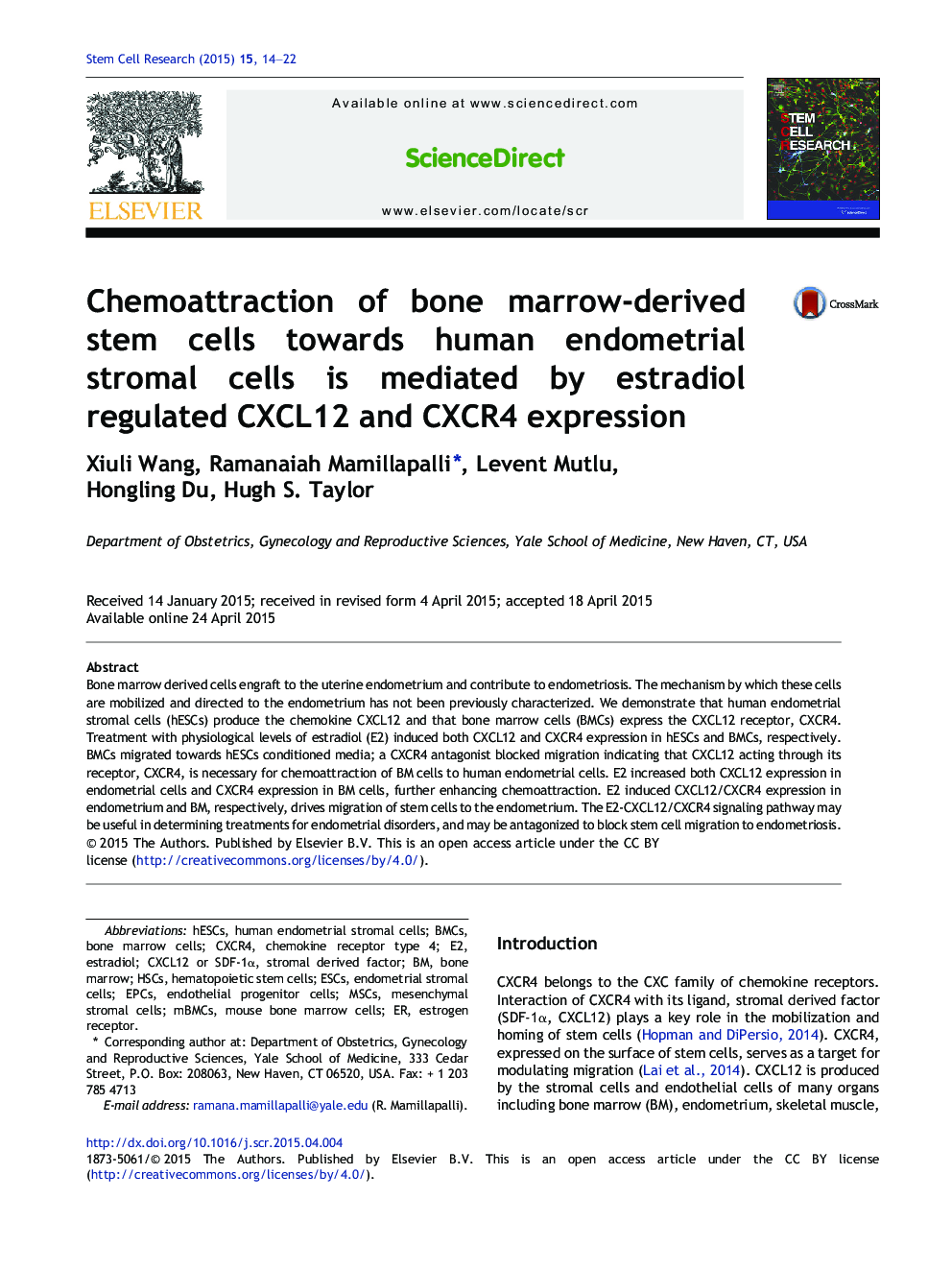| Article ID | Journal | Published Year | Pages | File Type |
|---|---|---|---|---|
| 2094068 | Stem Cell Research | 2015 | 9 Pages |
•Human endometrial stromal cells produce CXCL12 and bone marrow cells express CXCR4.•Estradiol induced CXCL12 and CXCR4 expression in hESCs and BMCs respectively.•Chemoattraction of BMCs towards hESCs is blocked by CXCR4 antagonist AMD3100•Estradiol enhances the chemoattraction of BMCs towards hESCs.•The E2-CXCL12/CXCR4 axis plays a role in stem cell migration to endometrium.
Bone marrow derived cells engraft to the uterine endometrium and contribute to endometriosis. The mechanism by which these cells are mobilized and directed to the endometrium has not been previously characterized. We demonstrate that human endometrial stromal cells (hESCs) produce the chemokine CXCL12 and that bone marrow cells (BMCs) express the CXCL12 receptor, CXCR4. Treatment with physiological levels of estradiol (E2) induced both CXCL12 and CXCR4 expression in hESCs and BMCs, respectively. BMCs migrated towards hESCs conditioned media; a CXCR4 antagonist blocked migration indicating that CXCL12 acting through its receptor, CXCR4, is necessary for chemoattraction of BM cells to human endometrial cells. E2 increased both CXCL12 expression in endometrial cells and CXCR4 expression in BM cells, further enhancing chemoattraction. E2 induced CXCL12/CXCR4 expression in endometrium and BM, respectively, drives migration of stem cells to the endometrium. The E2-CXCL12/CXCR4 signaling pathway may be useful in determining treatments for endometrial disorders, and may be antagonized to block stem cell migration to endometriosis.
